The Silk Road: Central Asia, Afghanistan and Iran: A Travel Companion
£12.80
Stretching from the ancient Chinese capital of Xian across the expanses of Central Asia to Rome, the Silk Road was, for 1,500 years, a vibrant network of arteries that carried the lifeblood of nations across the world. Along a multitude of routes everything was exchanged: exotic goods, art, knowledge, religion, philosophy, disease and war. From the East came silk, precious stones, tea, jade, paper, porcelain, spices and cotton; from the West, horses, weapons, wool and linen, aromatics, entertainers and exotic animals. From its earliest beginnings in the days of Alexander the Great and the Han dynasty, the Silk Road expanded and evolved, reaching its peak during the Tang dynasty and the Byzantine Empire and gradually withering away with the decline of the Mongol Empire.
In this beautifully illustrated book, which covers the Central Asian section of the Silk Road – from Lake Issyk-kul through Tashkent, Samarkand, Bukhara, the Kyzyl Kum Desert, Khiva and Merv to Herat, Kabul and Iran – Jonathan Tucker uses travellers’ anecdotes and a wealth of literary and historical sources to celebrate the cultural heritage of the countries that lie along the Silk Road and illuminate the lives of those who once travelled through the very heart of the world.
In this beautifully illustrated book, which covers the Central Asian section of the Silk Road – from Lake Issyk-kul through Tashkent, Samarkand, Bukhara, the Kyzyl Kum Desert, Khiva and Merv to Herat, Kabul and Iran – Jonathan Tucker uses travellers’ anecdotes and a wealth of literary and historical sources to celebrate the cultural heritage of the countries that lie along the Silk Road and illuminate the lives of those who once travelled through the very heart of the world.
Read more

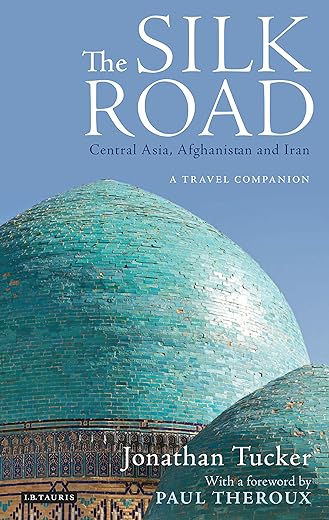
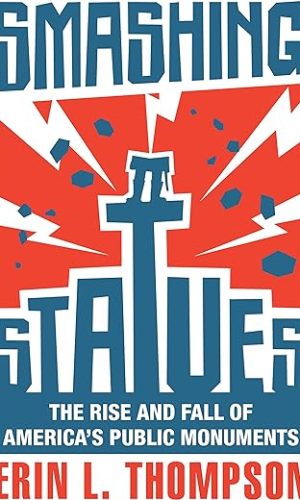
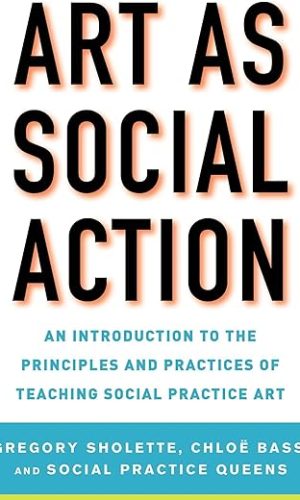
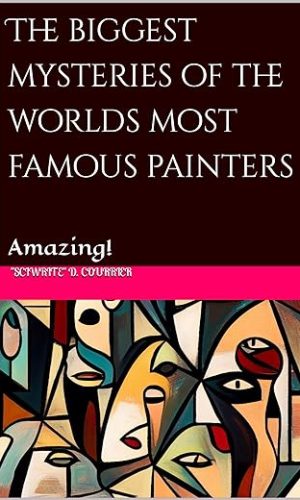
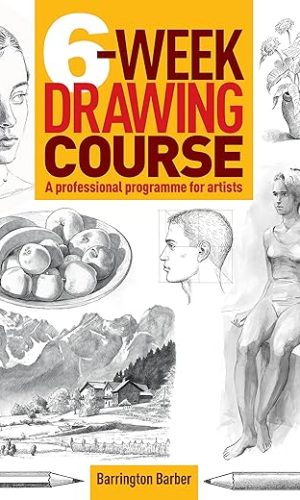



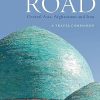
by Silk Road Books Literary Review
The Silk Road Central Asia, Afghanistan and Iran a travel companion
Author: Jonathan Tucker
Publisher: IB Tauris
Rating Outstanding
This is an excellent guide to the history of the silk road. Along the Silk Road India exported slaves and China exported know how to the West, including rather destructively of gun powder, whilst from the West came wool and textiles.
Kabul has been a silkroad entrepot since at least the Kushan period (first century B.C. to fourth century A.D.). After the Afghan civil war of 1992-96 large section of Kabul lay in ruins,, above it all on the slopes of a hill called Sher Darwaza, the Great Mughal Emperor, Babur, lay in eternal repose in the gardens that he loved so much. The fighting of the 1990s did not spare the tomb or the gardens and its appearance in 2000 was a metaphor on the impermanence of Kingship and power.
Bamiyan
Byron visited Bamiyan and condemned the Buddhas, “Neither has any artistic value”. The author disagrees however and states “But Byron was wrong, of course, and the two old giants of Bamiyan – for the 1,500 years that they survived – ranked among the great artistic creations of the earth.” Whether Byron is right or the author is right arguably remains open to question. That Byron was a pompous fool who passed himself of as an expert is perhaps more true.
The Timurids
Timur spent most his life fighting other Muslims like the Mamluks and Ottomans. However the Chinese dragon did give him inspiration in the last years of his life.
Indeed, Chinese merchants found an odd welcome from Timur:
“During the month of June this year…there had arrived a caravan of eight hundred camels bringing merchandise from China. Then it was that Timur having come home from his western campaigns had received that Chinese Embassy bearing the message sent him b the Emperor of China: and he forthwith had ordered the whole caravan, men and goods, to be taken into custody and that none should return to China (Ruy Gonzalez de Clavijo translated by Guy Le Strange in Clavijo (1928)). “
By the autumn of 1404, Timur had assembled a huge army and set off on his greatest campaign: the conquest of China and the forcible conversion of its people to Islam. In Otrar, north of Tashkent, he paused for the winter but in February of 1405 he fell ill and died. Timur’s death at Otrar spared China from invasion and was also a neat piece of historical symmetry – the beginning of the Mongols’ westward expansion was sparked by the murder of the members of a trade caravan by the city’s governor in 1218. By 1407 Timur’s empire had shrunk to include only Khurasan, Afghanistan and Transoxiana.
Beyond Balkh the next major city on the Silk Road is Merv, which was captured by the Arabs in 651 and became the capital of Khurasan. The writer states: “Merv enjoyed it s greatest period of prosperity as capital of an empire that extended from the Amu Darya to the Mediterranean”. However, Merv was not the capital but Baghdad and the author sadly seems to have erred here. Indeed the author writes about Merv :”It became the greatest city of the Muslim world after Baghdad and its merchants roamed far and wide (p.67).
The great scholars of the day flocked to Merv during the period. Among them were the great poet and mathematician Hakim Omar Khayyam (c.1048-c.1131) who is said to have assembled his astronomical tables at Merv observatory.
Samarkand
The City’s glittering age occurred during the final years of the Silk Road. The Samarkand of the Timurids was capital of a vast empire, and a series of grandiose construction projects caused the city to take on a form that can still be seen today. Walls of 7km in length were built around the town, now positioned to the south of old Afrasiab, and a citadel built in the western part of the city to contain Timur’s residence and treasury – the Kok-Saray, or Blue Palace. Samarkand’s population was large, about 150,000 according to the Castillian Envoy Ruy Gonzalez de Clavijo, representative of Henry III of Castile – and included Turks, Arabs, Moors, Greeeks, Armenians and Indians. There was a strong contingent of Christians. The Registan square and the surrounding markets were filled with goods from the countries of the Silk Road:
“The markets of Samarqand further are amply stored with merchandise imported form distant and foreign countries. From Russia and Tartary come leathers and linens, from Cathay come silk stuffs that are the finest in the whole world, and of these the best are those that are plain without embroideries. Thence too is brought musk which is found in no other land but Cathay, with Balas rubies and diamonds which are more frequently to be met with in those parts than elsewhere, also pearls, lastly rhubarb with many other spiceries (Ruy Gonzalez de Clavijo (1928)).
One of Samarkand’s earliest and most important monuments has a funeraray role. “The Shah-I Zindah necropolis was built on the southern slopes of Afrasiab Hills over a period of almost 900 years, from the eleventh to the nineteenth century . It developed around the tomb of Qutham ibn al-Abbas, a cousin and companion of the Prophet who was with the first Arab armies in Transoxiana and died at Samarkand in about 677. The legend is that Qutham ibn al-Abbas ( in Persian, Shah I Zindah or the ‘living King’) was decapitated by the city’s Sogdian defenders and jumped with his head into a nearby well. There he is said to remain until his services are required, and he will re-emerge as the defender of Islam” – President Islam Karimov had better behave himself then!
by Always something new…
The subject is so vast it must be difficult to produce a guide; what to leave out? This is an elegantly written, rich, dense and compact account of the region and its history as revealed by the various hubs and routes with diversions focusing on personalities, places, periods and peoples. Even if you’re not covering every mile, context is everything and this book succeeds in covering a lot of ground while giving a concise account of the Silk Road. Good maps. Clear chronological tables in the index. A slim, light, but weighty book useful for reference and as a guide. Worth having.
by Hazel Bell
Was expecting colour photographs here
The work will complement our library
by markr
Vey useful short history of the silk road, with clear maps, chronology and glossary, which all help with understanding. So many of the towns and buildings have long gone, at last in part due to the devastation wrought by the mongol invaders, and this book is an excellent tool for determining what would be worth seeing dependant on one’s level of interest.
it is as it says on the cover, a travel companion, and one i have found useful and interesting in planning my own visit to Central Asia, and one which i shall certainly take with me for reference. Some actual travel advice would have been useful as an annexe to the book too
The illustrations are useful – but would certainly have been improved if they were colour plates rather than the black and white images printed around the narrative pages which this book contains
by Mr. Kim S. Jones
Background research